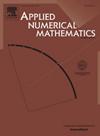Mathematical modelling of problems with delay and after-effect
IF 2.2
2区 数学
Q1 MATHEMATICS, APPLIED
引用次数: 0
Abstract
This paper provides a tutorial review of the use of delay differential equations in mathematical models of real problems. We use the COVID-19 pandemic as an example to help explain our conclusions. We present the fundamental delay differential equation as a prototype for modelling problems where there is a delay or after-effect, and we reveal (via the characteristic values) the infinite dimensional nature of the equation and the presence of oscillatory solutions not seen in corresponding equations without delay. We discuss how models were constructed for the COVID-19 pandemic, particularly in view of the relative lack of understanding of the disease and the paucity of available data in the early stages, and we identify both strengths and weaknesses in the modelling predictions and how they were communicated and applied. We consider the question of whether equations with delay could have been or should have been utilised at various stages in order to make more accurate or more useful predictions.
时滞和后效问题的数学建模
本文提供了在实际问题的数学模型中使用延迟微分方程的一个复习教程。我们以COVID-19大流行为例,帮助解释我们的结论。我们提出了基本的延迟微分方程作为有延迟或后效应的建模问题的原型,我们揭示了(通过特征值)方程的无限维性质和振荡解的存在,而不是在相应的无延迟方程中看到的。我们讨论了如何为COVID-19大流行构建模型,特别是考虑到对该疾病的了解相对缺乏和早期阶段可用数据的缺乏,我们确定了建模预测的优势和劣势,以及如何进行沟通和应用。我们考虑的问题是,是否可以或应该在不同阶段使用具有延迟的方程,以便做出更准确或更有用的预测。
本文章由计算机程序翻译,如有差异,请以英文原文为准。
求助全文
约1分钟内获得全文
求助全文
来源期刊

Applied Numerical Mathematics
数学-应用数学
CiteScore
5.60
自引率
7.10%
发文量
225
审稿时长
7.2 months
期刊介绍:
The purpose of the journal is to provide a forum for the publication of high quality research and tutorial papers in computational mathematics. In addition to the traditional issues and problems in numerical analysis, the journal also publishes papers describing relevant applications in such fields as physics, fluid dynamics, engineering and other branches of applied science with a computational mathematics component. The journal strives to be flexible in the type of papers it publishes and their format. Equally desirable are:
(i) Full papers, which should be complete and relatively self-contained original contributions with an introduction that can be understood by the broad computational mathematics community. Both rigorous and heuristic styles are acceptable. Of particular interest are papers about new areas of research, in which other than strictly mathematical arguments may be important in establishing a basis for further developments.
(ii) Tutorial review papers, covering some of the important issues in Numerical Mathematics, Scientific Computing and their Applications. The journal will occasionally publish contributions which are larger than the usual format for regular papers.
(iii) Short notes, which present specific new results and techniques in a brief communication.
 求助内容:
求助内容: 应助结果提醒方式:
应助结果提醒方式:


